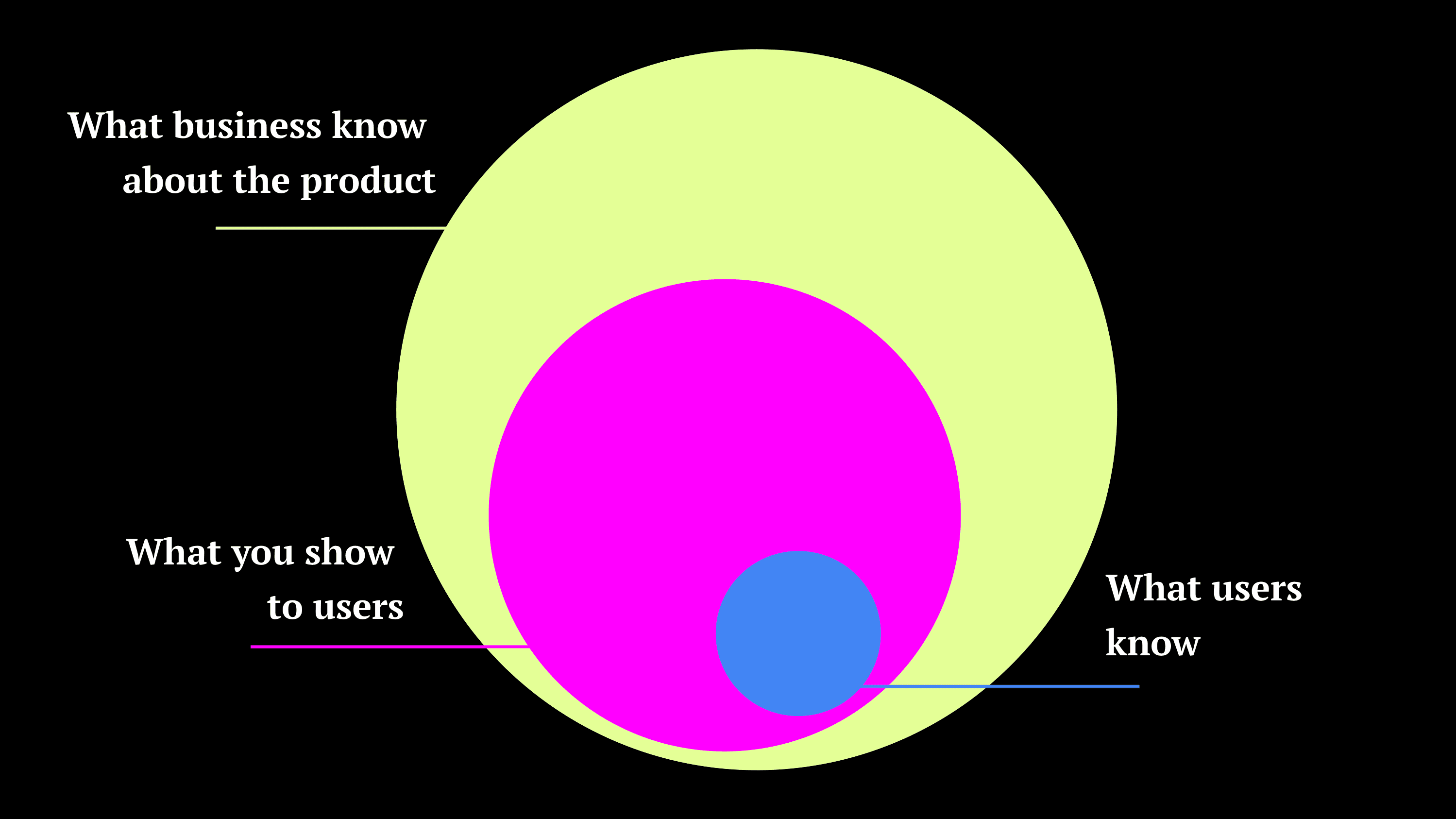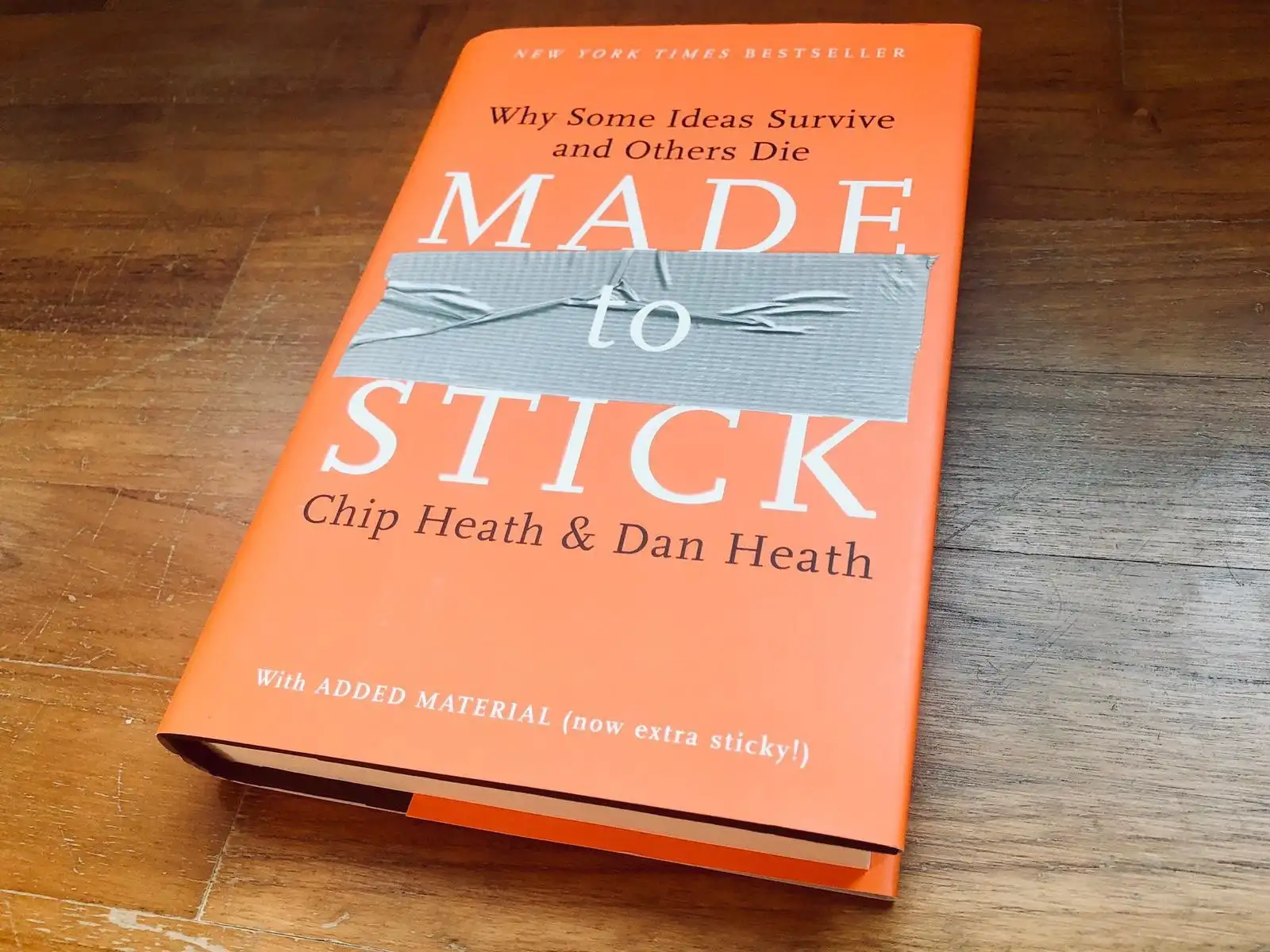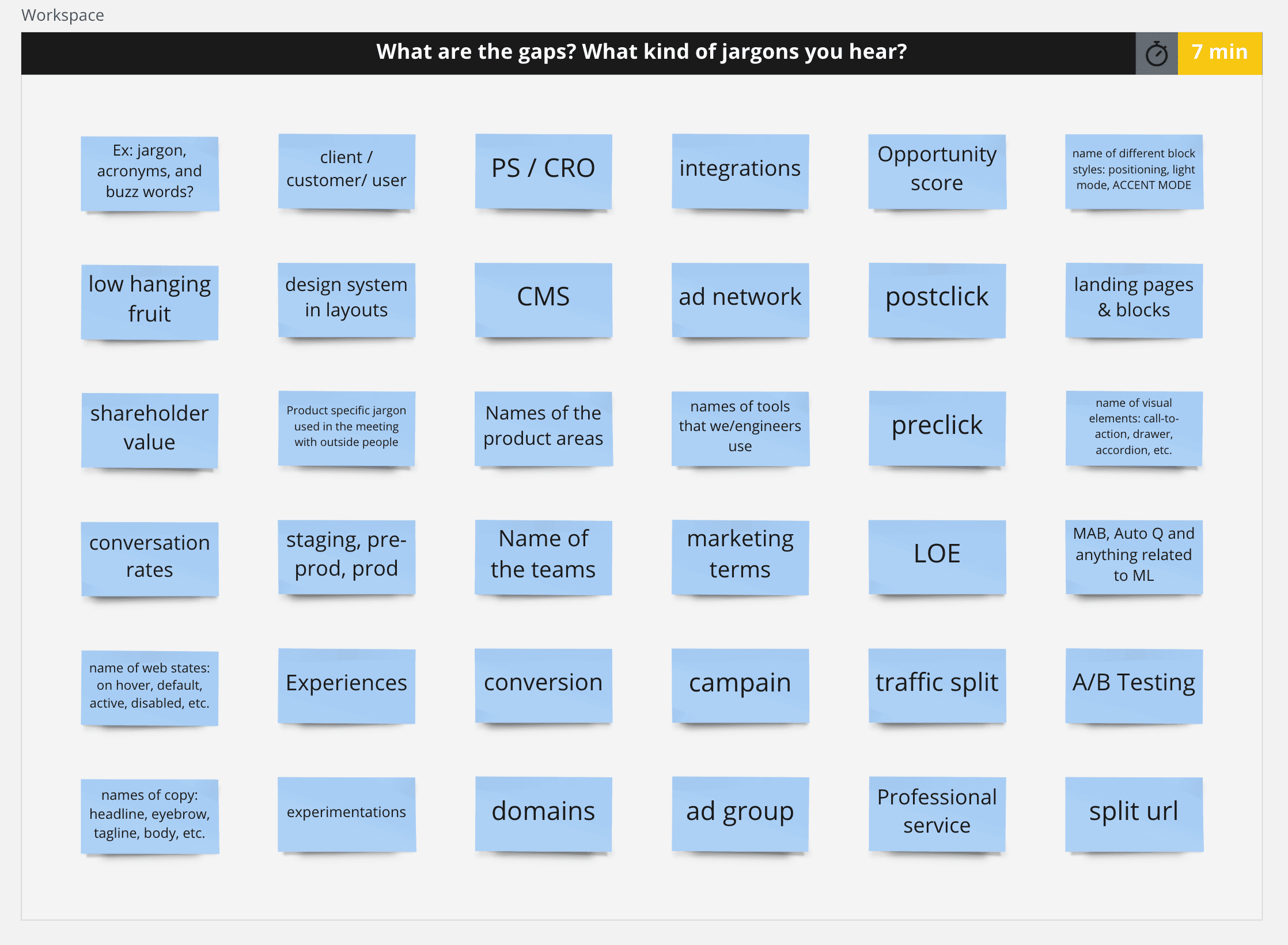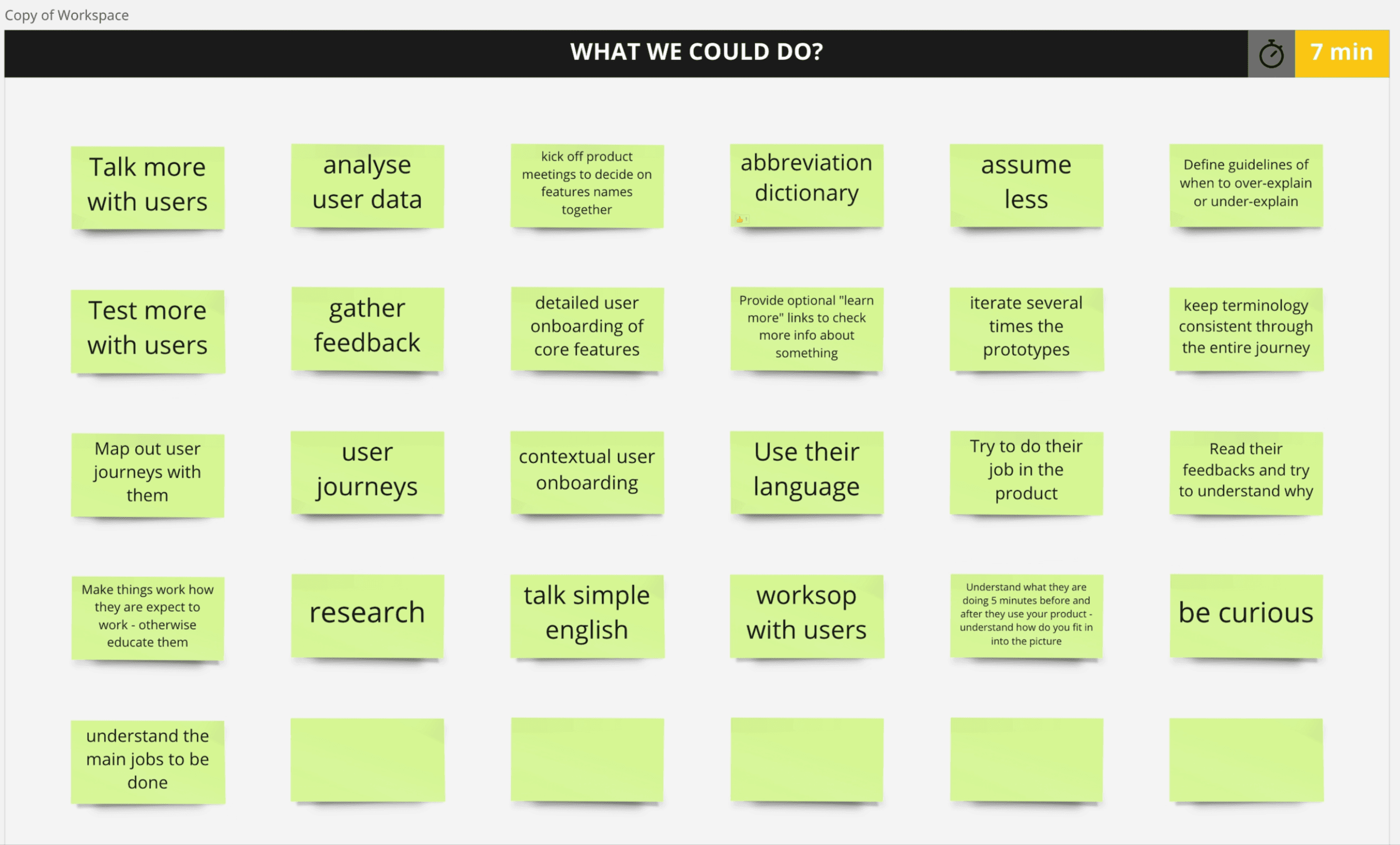"Unlearning What You Know: A Guide to Avoiding the Curse of Knowledge in Product Design"
UX design is all about communication.
It's about understanding the user and then translating that understanding into design decisions to help them accomplish their goals. I know that you know this, it's basic concepts in our field. But what happens when you become such an expert in your product, that you forget what's like to be a beginner? What happens when you find yourself surrounded by industry jargon and single-minded perspectives that assume that the users understand the product as much as you do?
You're falling victim to the curse of knowledge.
It's a psychological phenomenon we're all vulnerable to thinking that others know what we know, and it was the first thing I noticed that was happening when I joined the design team at Instapage. The team knew too much about the product and it was affecting their design decisions, presentations, and user interviews.
Here I'll show how I guided the design team to overcome that curse in a workshop that aimed to create awareness of the curse of knowledge, generates ideas on how to overcome it, and develop action plans.

The curse of knowledge
I discovered the term "curse of knowledge" while reading the book Made to Stick by Chip & Dan Heath.
The book describes a study conducted by Elizabeth Newton in 1990. In the study, she divided her participants into two groups: tappers and listeners. The tappers would tap out well-known songs, such as "Happy Birthday to You", while the listeners guessed which song it was.

The result showed that the tappers were confident that the listeners would guess correctly. They predicted that the odds were 50%. Still, only 2.5% of songs were guessed correctly. When a tapper taps, he is hearing the song in his head.
Meanwhile, all the listeners can hear is a bunch of disconnected taps. Because the tapper knew the song's name and is hearing the song in his head it makes it impossible for him to imagine what it's like to lack that knowledge.
That's the curse of knowledge.
Once we know something we find it hard to imagine what it was like not to know it.
This phenomenon in product design it's straightforward to understand. It occurs when people know too much about a subject that they can't see the design from the user's perspective anymore. This makes it difficult for them to design effectively because they can't put themselves in the shoes of the user.
The curse inside the company
Joining Instapage was a bit of a challenge at first. I had to quickly catch up with the product team and learn about the Instapage product - a landing page builder for marketers - and Postclick, the new AI-driven platform for landing page conversions. It was a lot of new information to digest, deep dive into two products and get ready to help the team soft launch Postclick in the next year.
During my first 90 days, it was clear to me that the Postclick platform had the potential to become the leader of the landing page builders market. However, before the release, we had to tackle some challenges that was in the way of the product:
- The big learning curve for first timers
- Although during the soft launch our Professional Service team was our personas, the lack of external testing gave us a sense of flying blind.
- UI and copy felt too much on the technical side.
We needed to fix asap, but first we needed to change our mindsets.
When you become a product expert most of the time you forget that users aren't accustomed to the product the way we are.
It's tough to shift perspectives and re-imagine using the product for the first time. This expert way of assuming that we know a lot about the product and assuming our users will follow our lead can have a big negative impact on the product's performance such as:
- Large bounce rate: the percentage of users who quit an app after viewing a single page, which translates to a significant loss of potential clients.
- Poor design: broken experiences, misplaced buttons, incorrect terms, and discouraged users.
We need to keep in mind that for users, this might be their first time encountering the product or feature, so we cannot make assumptions about their knowledge or understanding.
Building a great user experience starts with empathy for the user and putting ourselves in their shoes, I know that you know this, but for some reason we fall in the trap of not putting this into action on our daily decisions.
So what did we do to overcome the curse of knowledge?
First of all, we acknowledge the fact that it exists, and that we are all cursed on some level. In our case, I couldn't change the company language bias and single-minded perspectives by night, but I could help my design team to acknowledge the problem, generate ideas, and make an action plan to influence their teams to break this curse.
So I facilitated a workshop with that objective. I explained the curse of knowledge and together we understood when and where in the company it was happening and what we could do to overcome it.
The workshop
The workshop happened on a Wednesday during our weekly Designers Workshop time.
All the designers were there, including our Principles Designers, Seniors Designers and Mid level Designers. A total of seven. Together we brainstormed ideas and came up with an action plan.
This was the outine for our 90 minutes workshop:
- Introduce the curse of knowledge and its impact on product design
- Brainstorm examples of how the curse of knowledge affects the team's work
- Develop strategies for overcoming the curse of knowledge
- Create an action plan for implementing the strategies
Here is a more detailed explanation on the exercises:
1- Intro and Workshop Principles: The workshop was based on the principles of Design Thinking. We started with a quick introduction to the basics of Design Thinking and then move on to the main topic of the workshop: the Curse of Knowledge.
2- What is the Curse of Knowledge: The Curse of Knowledge is a cognitive bias that occurs when we have knowledge that others do not have. This knowledge can make it difficult for us to communicate with others because we assume that they know what we know. As a result, we may use jargon or technical terms that they don’t understand, or we may not explain things clearly enough. The Curse of Knowledge can lead to communication difficulties and misunderstandings.
3- Tappers and Listeners dynamic: To illustrate the effects of the Curse of Knowledge, we did a quick exercise called “Tappers and Listeners.” This exercise helped us to understand how the Curse of Knowledge impacted our communication.
4- Reflection - Communication Gaps: After the Tappers and Listeners exercise, we took some time to reflect on our own experiences with communication difficulties. We shared stories when we have struggled to communicate with others, and we brainstormed ways to overcome these difficulties in the future.

5- Round of Ideation: Next, we will do a round of ideation, during which we will generate ideas for how to improve communication in our everyday lives. We thought about small changes that we can make in our own behavior, as well as larger systemic changes that could help to reduce communication difficulties in general.
6- Reflection - Empathy Gaps: After the round of ideation, we took some time to reflect on empathy gaps. An empathy gap is a situation in which people have difficulty understanding or empathizing with other people’s perspectives.

7- Round of Ideation: We ran another round of ideation, during which we generated ideas for how to improve empathy in our everyday lives.
8- Action plans: Finally, we created action plans for how we can apply what we’ve learned in our work routine. We shared ways to improve communication and empathy in our personal work relationships, as well as ways to advocate for change at larger scales.
Our key learnings
We realized that the designers although we were working on different product teams were facing the same problems regarding communication and advocating for better design decisions and processes. The team's key learnings could be divided into the raise of awareness of the curse of knowledge and bringing back the curiosity on the user feedback:
Awareness:
-
We are the experts on the product, not our users
-
The office way of talking about the product is technical, avoid this when talking with users
-
Don’t be clever when talking, be clear.
Focus on the user:
- Use prototypes as conversation tools to learn more about the users
- Don’t try to be right, be curious instead
- Aim to use your audience's language
Results
The results from this workshop echoed later on with the designers.
We always remembered to try to be more clear in our communication and design decisions. It was a constant reference in our Design Critiques, ideation sessions, and Open Houses when we presented our designs to other teams. It also had a huge impact on the way we conducted our usability tests and scripts for unmoderated tests.
In conclusion, the curse of knowledge is real and can hurt product design.
By working too much time on a product it's hard to see the design from the user's perspective anymore. One way to solve this is to embrace it, create awareness, generate ideas to overcome it, and develop action plans, to put into practice. By addressing this issue, the team was able to improve the design of the Postclick platform and conduct better design decisions. Assume less and use your design tools, such as prototypes to engage with users, constantly learning and evolving.